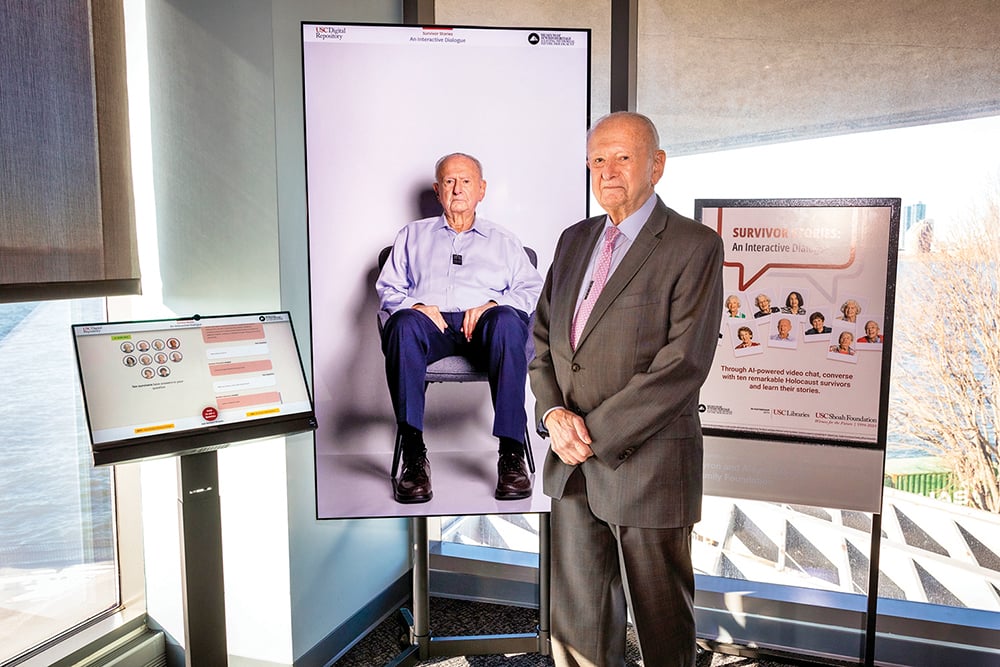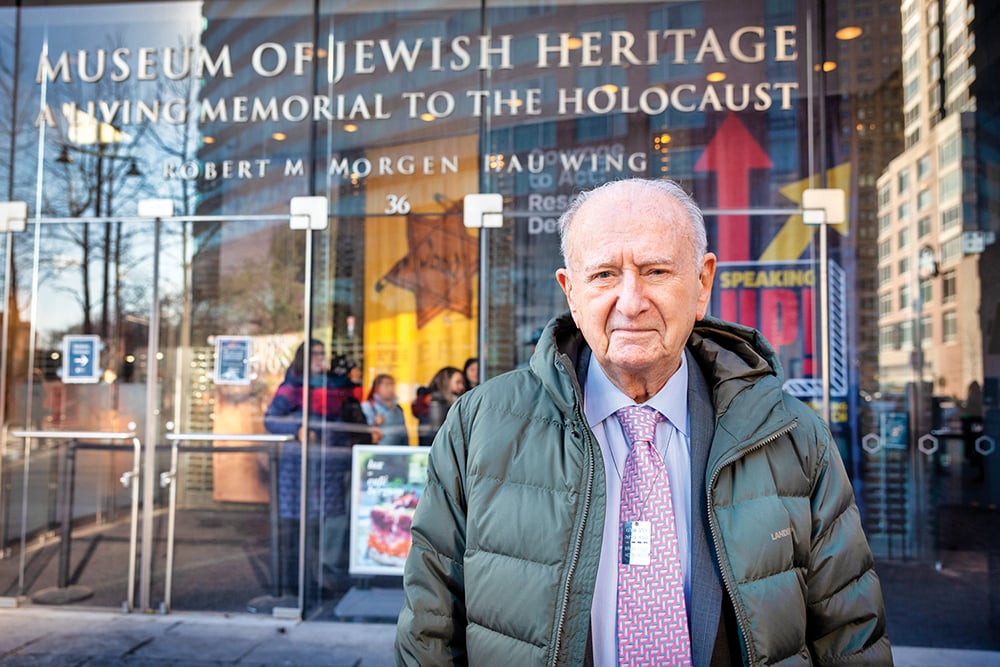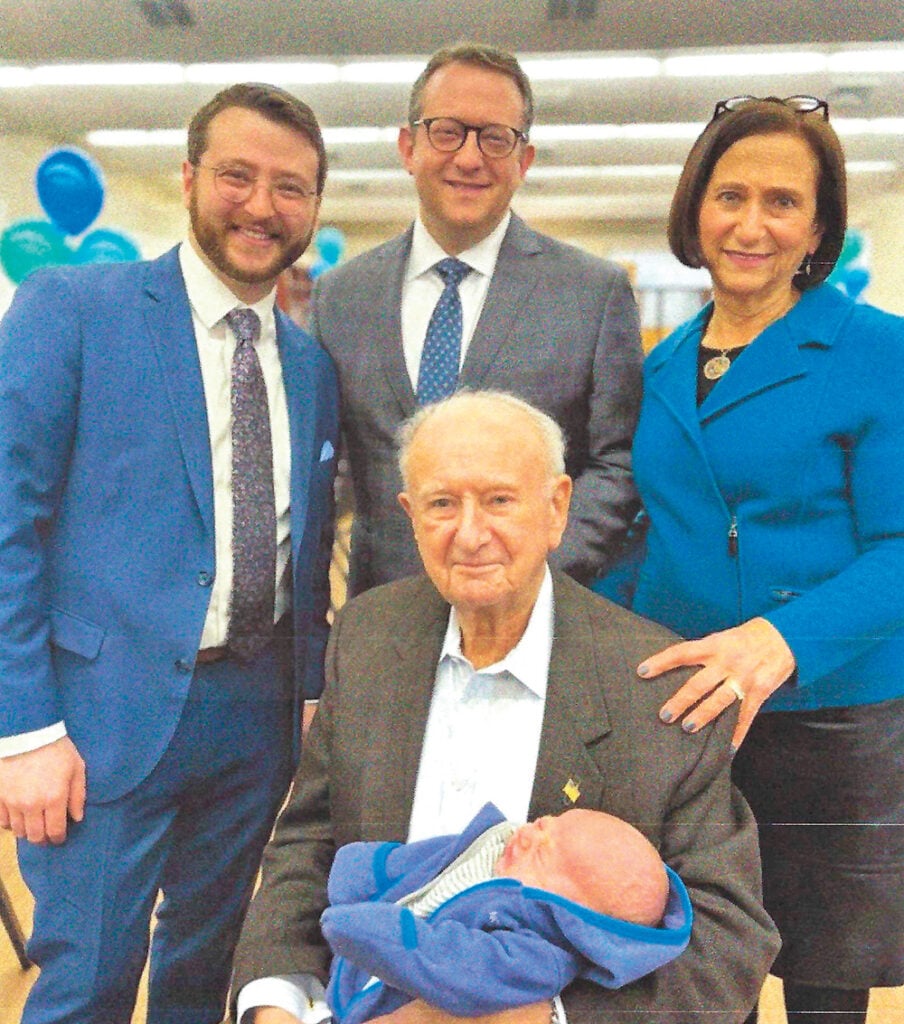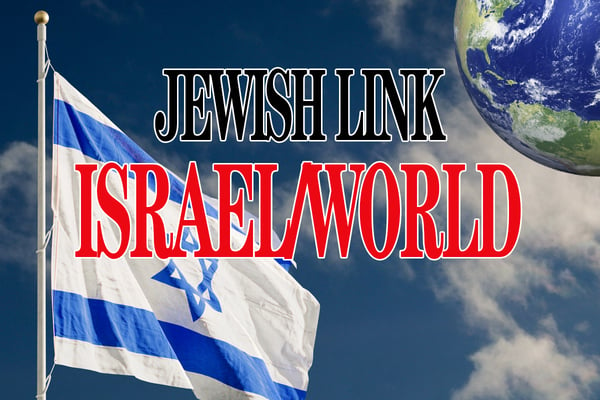
Norbert Strauss of Teaneck, 98, is the patriarch of an ever-growing family spanning five generations that includes highly reputed Jewish educators. On January 27, International Holocaust Remembrance Day 2025, Strauss added another notch to his impressive lifetime accomplishments. Along with nine other nonagenarian Holocaust survivors, Strauss is featured in the new video installation and web resource titled “Survivor Stories: An Interactive Dialog,” housed at the Museum of Jewish Heritage—A Living Memorial to the Holocaust in Battery Park, Manhattan.
Conceived and produced in partnership with the University of Southern California’s Shoah Foundation and Libraries, the new exhibit utilizes non-generative AI technology to allow visitors and online users to converse with these selected survivors and will be available to educate the public in perpetuity. The launch of the installation took place at the museum on International Holocaust Remembrance Day at the largest recent gathering of Holocaust survivors (over 200) and against the backdrop of the simulcast of the 80th anniversary of the liberation of Auschwitz.
The 10 survivors who are featured in the new exhibit live in the New York Metropolitan area and are members of the Museum’s speakers bureau. They have been sent out since the museum’s 1997 founding to speak to hundreds of student and adult audiences in schools, synagogues and other venues about their experiences during these dark days of human history. Their personal sagas highlight their courage, resilience and determination to live and tell their stories. Now their sagas will live on and continue to inspire for generations to come.

The survivors were filmed at the Museum of Jewish Heritage during the summer of 2024. An extensive list of questions was posed to them over the course of five days for more than four hours daily. The questions had been developed by the USC partnering organizations and represented those most frequently asked by student and adult audiences. They totaled well over 100 queries. Their interviews were recorded and form the basis of this new, high-tech installation that enables museum visitors and website users to ask questions and receive appropriate answers. The questions are directed to a large screen on which the survivor is perched on a chair and responds with actual mouth and hand movements, simulating a firsthand conversation. Teachers and students, researchers and others outside of New York are able to experience “Survivor Stories: An interactive Dialog” remotely, via the interactive website.
Strauss’s Holocaust story of survival spans the years 1933 to 1941. He is one of very few survivors who actually witnessed the 1938 pogrom known as Kristallnacht, which launched the intensifying attacks against the Jews of Europe. Strauss remembers his horror, as a young boy of 11, the morning after the pogrom, when he witnessed firsthand the smoldering of his magnificent synagogue in Frankfurt. “I quickly picked up burnt pebbles and hid them in my pockets for future testimony,” he said.
Through the courage and perseverance of his mother and father, due in part to their military service to Germany in World War I, the family was reunited in the U.S. in 1939 after many close calls and twists and turns. His full testimony can be accessed in person and online at The Museum of Jewish Heritage.
Upon their arrival in the U.S., the family settled in Washington Heights, where they made the acquaintance of the family of future Secretary of State Henry Kissinger, who was helpful to Strauss in promoting his career. In pursuing an American education, Strauss attended Stuyvesant High School and went on to earn a BBA from the Baruch School of Business in 1949, but not before he expressed his gratitude to the U.S. by serving in the United States Army Infantry from 1945 through 1947 during the Korean War.

Professionally, Strauss worked for Philipp Brothers Inc. from 1949 through 1985, where he served as group vice president, general traffic manager and international traffic manager consultant. After his lengthy career, Strauss was determined to continue giving back to society through volunteerism. In his 2012 memoir “My Stories: Highlights of My Life,” he wrote, “When I departed from Philipp Brothers, I wanted to pay back some of what my family owed to society. The U.S. had given us a new home. I had a wonderful and healthy growing family. More I did not need. It was payback time.” Beginning in 1993 and lasting for close to 30 years, Strauss volunteered at Englewood Hospital and Medical Center in the human resources and finance departments. Rumor has it that he even had his own office.
Israel was also always a focal point of his efforts and volunteerism. In 1982, Strauss volunteered with the Israel Defense Forces Infantry, serving in the Golan Heights. From 1960 through 1990, he was an active volunteer on the American Committee for Shaare Zedek Hospital in Jerusalem, treasurer and member of the board of directors and member of the international board of governors. Frequent trips to Israel were incorporated into his family’s lives.
Strauss has spoken about his Holocaust experiences for close to 20 years. He believes that oral testimonies are far more effective than diaries and memoirs. “When a young person sees a Holocaust survivor in front of him, he is more likely to internalize the experience and keep it with him far longer and more vividly.”
Teaneck is very fortunate in counting Strauss and his family among its long-time residents. Strauss has spoken at local Holocaust commemorations in synagogues, schools and community-wide gatherings on many occasions. Just last year, he and representatives of his family served as the annual legacy family at the Teaneck Holocaust Commemoration on Yom HaShoah. Currently, adding to his 32 great-grandchildren, the Strauss family includes three great-great grandchildren—kein yirbu!
The Museum of Jewish Heritage—A Living Memorial to the Holocaust is located on the Edmond J. Safra Plaza at 36 Battery Place in Manhattan.
For information about exhibits and visiting hours go to www.mjhnyc.org or call 646-437-4202.









